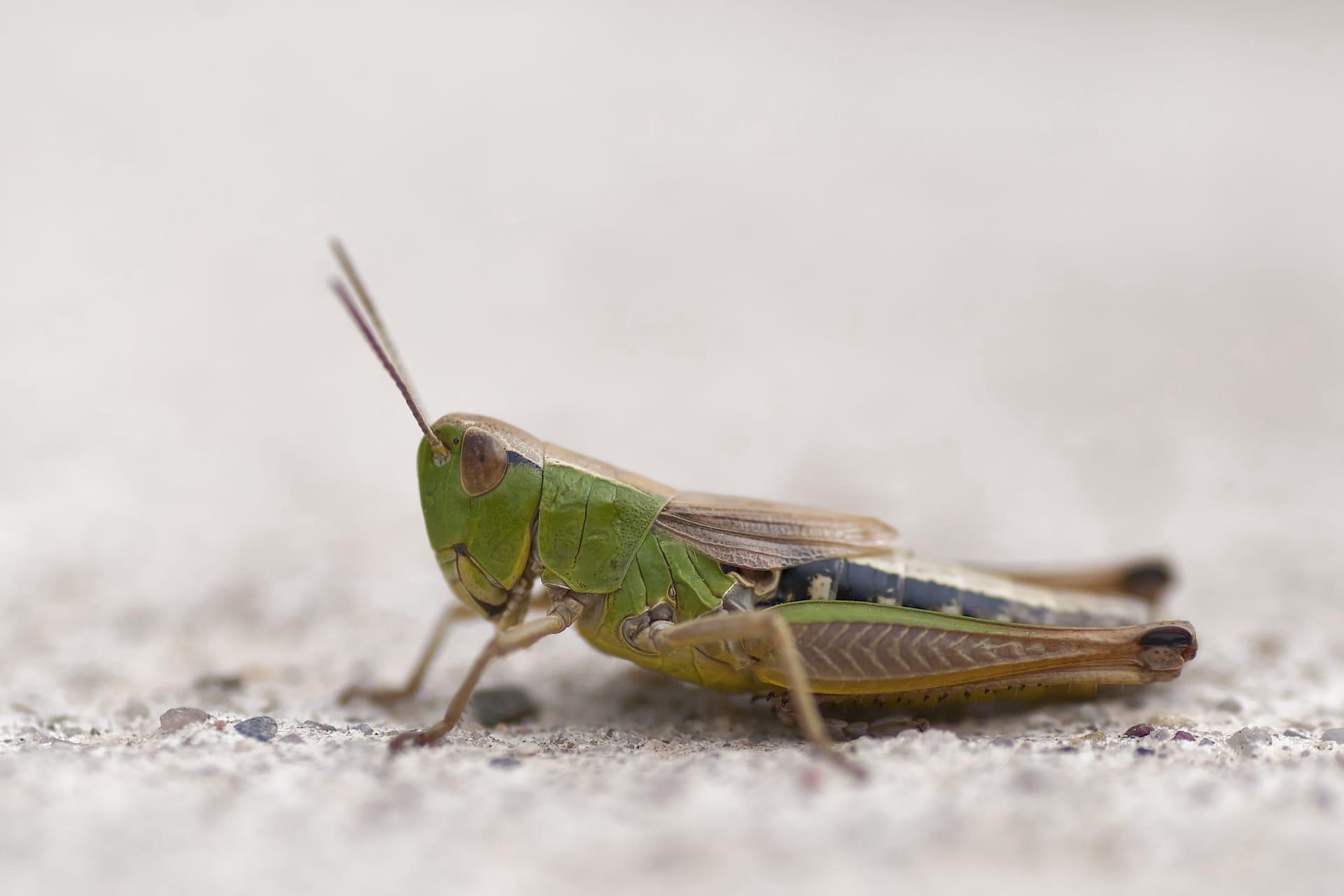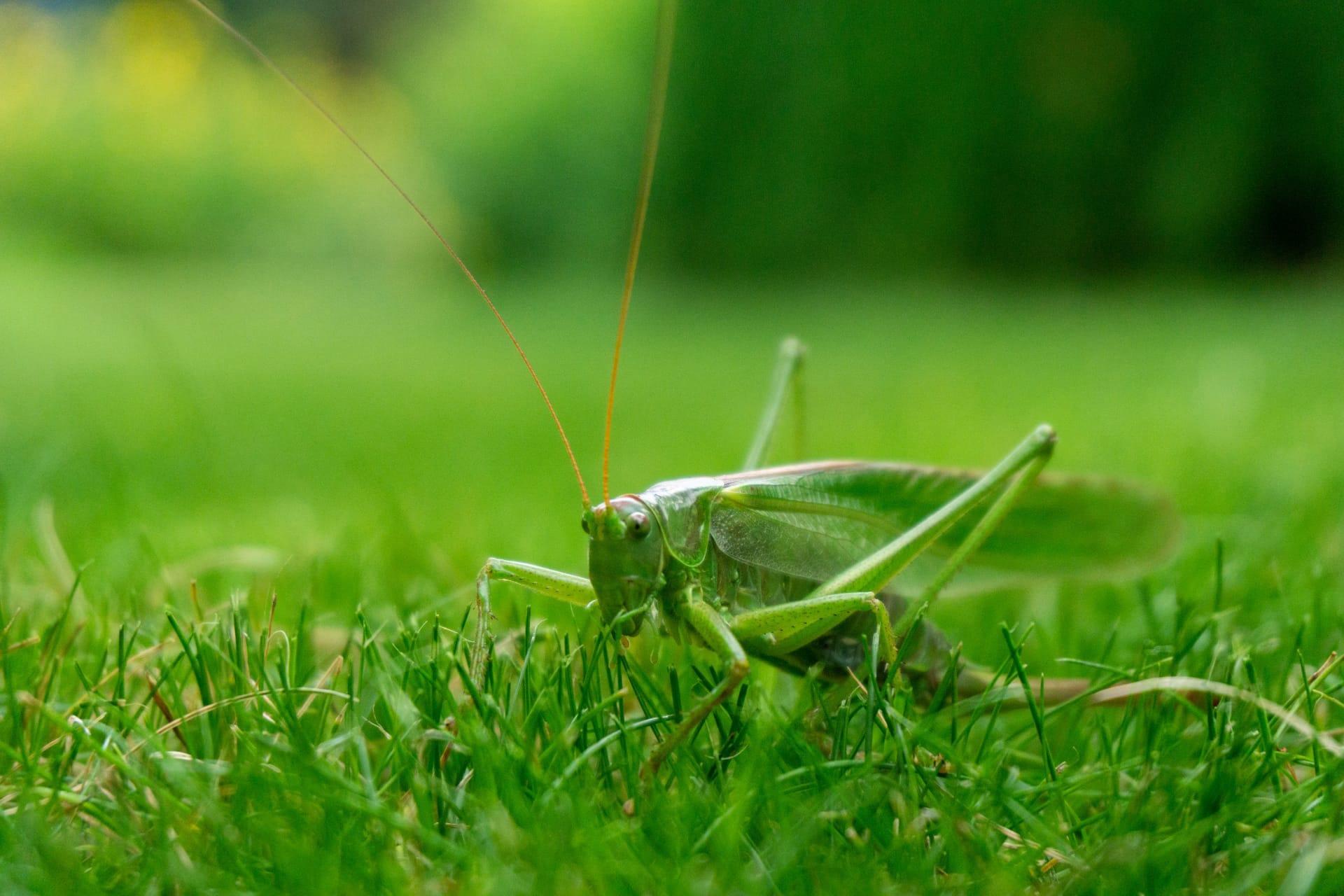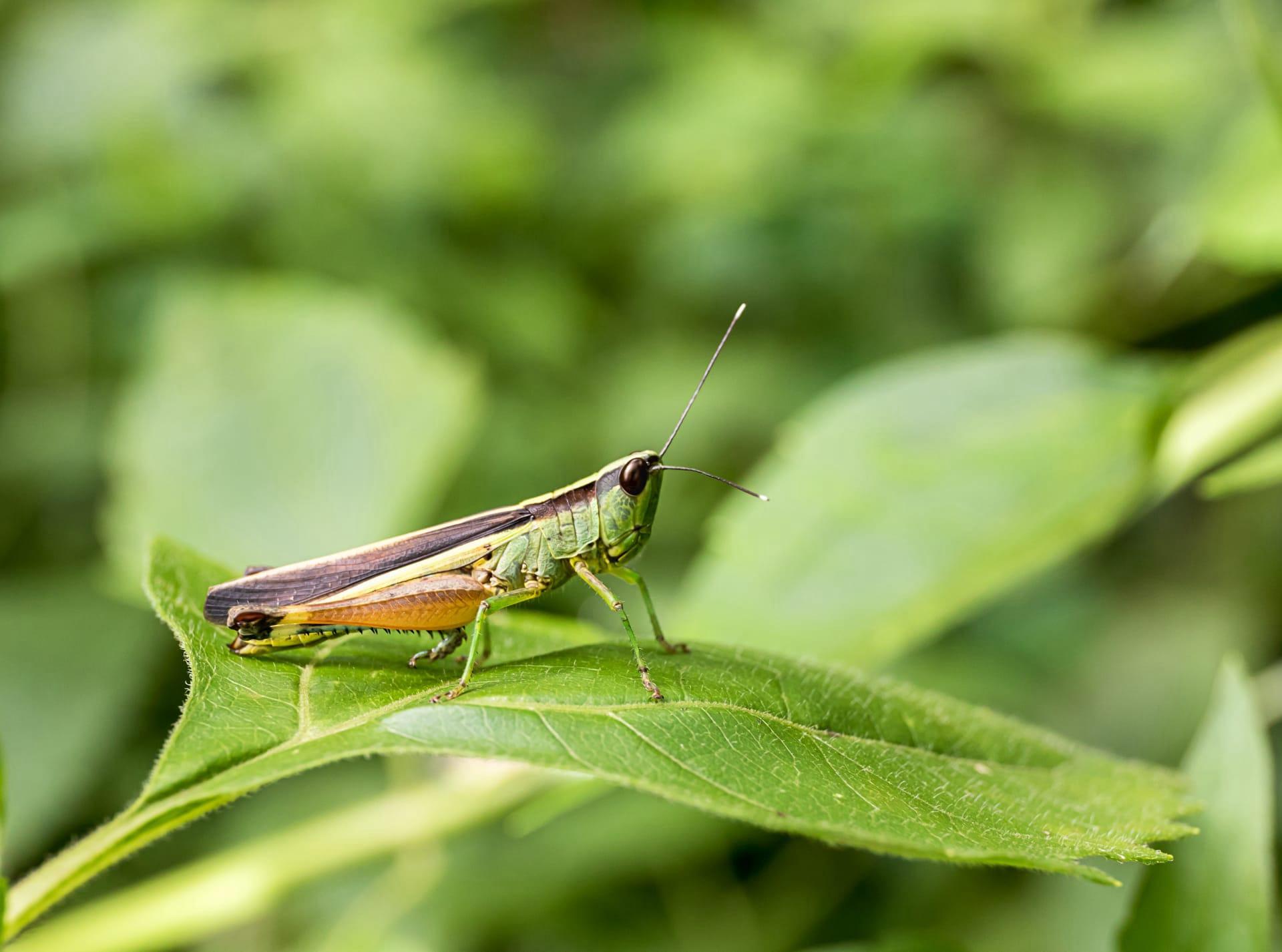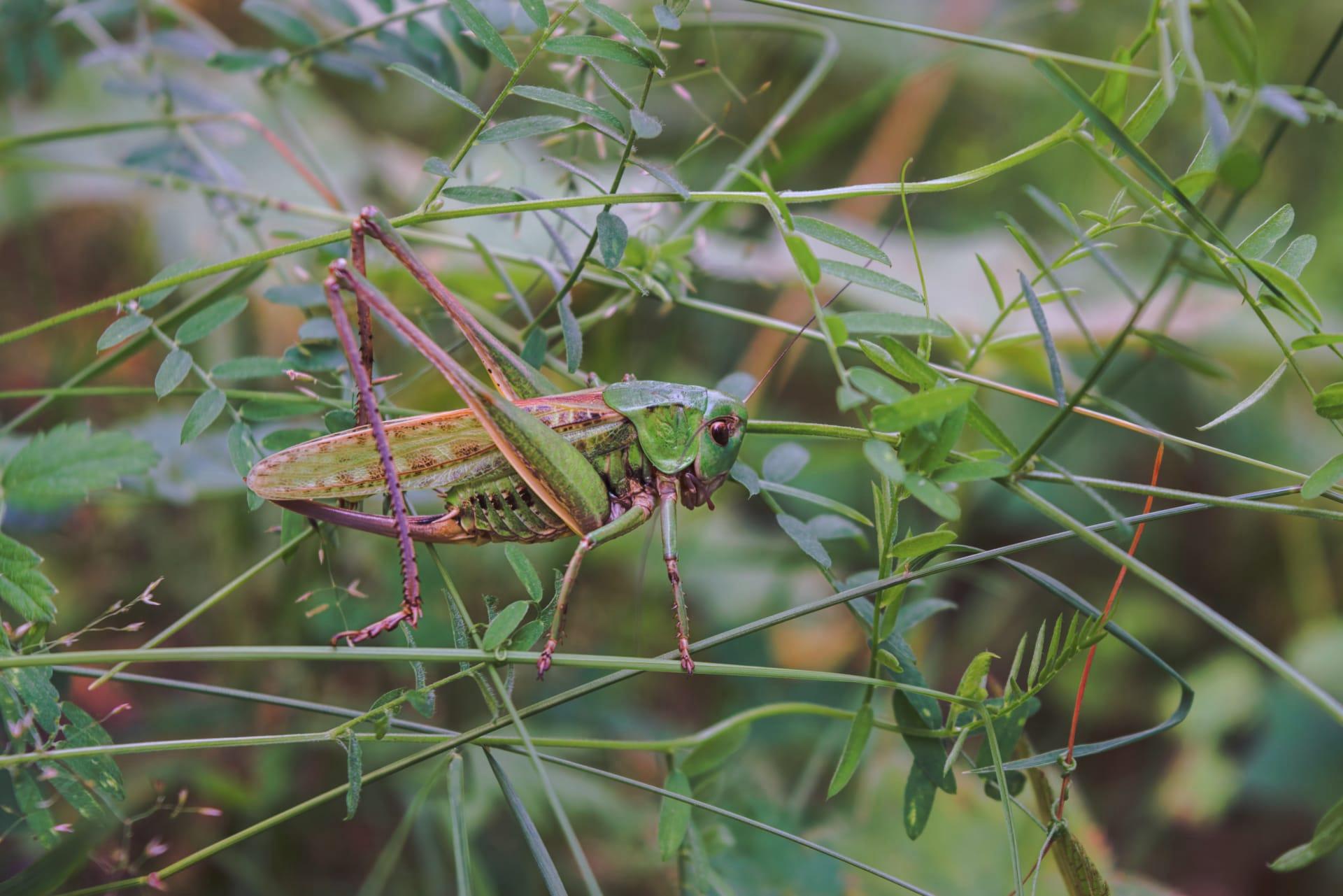Grasshopper
- Home /
- Mini Encyclopedia /
- Animal /
- Grasshopper
1
Grasshoppers, fascinating insects belonging to the suborder Caelifera within the order Orthoptera, are known for their jumping ability and chirping sounds. This group includes over 11,000 species, showcasing a tremendous diversity. Characterized by their long hind legs, short antennae, and typically green or brown bodies, grasshoppers are found in various habitats. They range in size from a mere 0.2 inches (5 mm) to a substantial 4.7 inches (12 cm) in length.
The distribution of grasshoppers is worldwide, spanning every continent except Antarctica. These adaptable insects thrive in a variety of environments, from grasslands, forests, and marshes to urban areas. However, their density and species variety differ significantly based on climate and geography. For instance, tropical regions boast the highest species diversity, while temperate zones have fewer species but often encounter large grasshopper populations that can impact agriculture.

2
Question: Do grasshoppers only eat plants?
Answer: A common misconception is that grasshoppers are strictly herbivores. While most species primarily consume plants, several are omnivorous. These opportunistic feeders occasionally eat animal matter, including insects, especially when plant food is scarce. This dietary flexibility helps them survive in diverse environments. Grasshoppers, in general, play a crucial role in controlling plant populations and are themselves a food source for various predators.

3
Grasshoppers employ several strategies for survival. One key tactic is their coloring, which provides camouflage. This helps them blend into their surroundings, making it harder for predators to spot them. Some species even have the ability to change color based on their environment. Additionally, their long hind legs are not just for impressive jumps; they also aid in a quick escape from threats.
Reproduction is another vital aspect of grasshopper survival. Most species lay eggs in soil or plant material, which hatch into nymphs. These nymphs resemble adult grasshoppers but lack wings. Their development involves multiple molts before reaching adulthood, a process that allows them to adapt to their environment and increase survival chances.

4
In ecosystems, grasshoppers play a dual role as both prey and predator, maintaining a critical balance. As herbivores, they help in plant control and nutrient recycling. By consuming large amounts of foliage, they influence plant community composition and can even contribute to soil health through their waste products.
Grasshoppers also serve as a vital food source for a variety of animals, including birds, reptiles, and mammals. This positions them as a key component in the food chain, linking plant matter to higher trophic levels. Their abundance or scarcity can significantly impact the populations of their predators and, in turn, the overall health of the ecosystem.

5
Film: "The Secret World of Grasshoppers" is a documentary produced in the United States in 2019. This film offers a detailed insight into the life of grasshoppers, exploring their behavior, habitat, and impact on the environment. It highlights their adaptability and the challenges they face in various ecosystems.
Book: "Grasshoppers and Crickets of North America," written by George W. Beccaloni and published in the United States in 2010, provides an extensive overview of these insects. Covering biology, behavior, and species diversity, it is an invaluable resource for enthusiasts and researchers alike.
Book: "Insects of the World: Grasshoppers," authored by Martin Walters and published in the UK in 2015, offers a global perspective on grasshopper species. This book delves into their ecological roles, distribution, and the environmental threats they face, making it a comprehensive guide for understanding these intriguing insects.